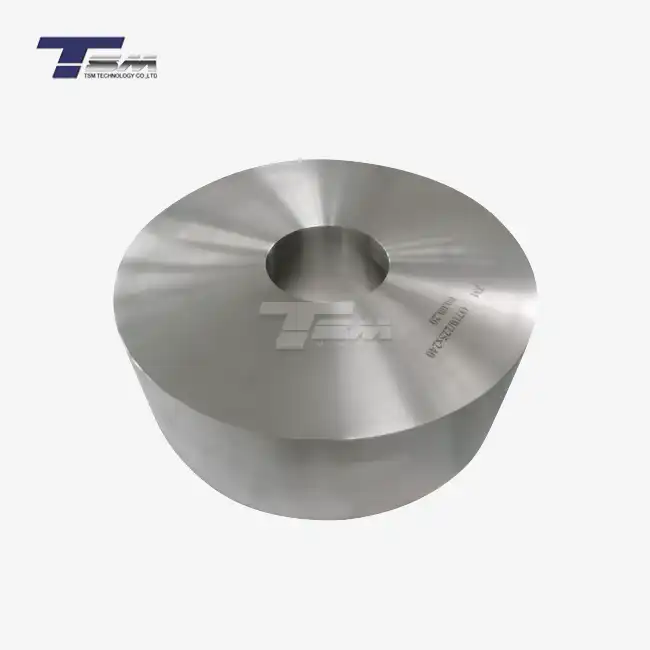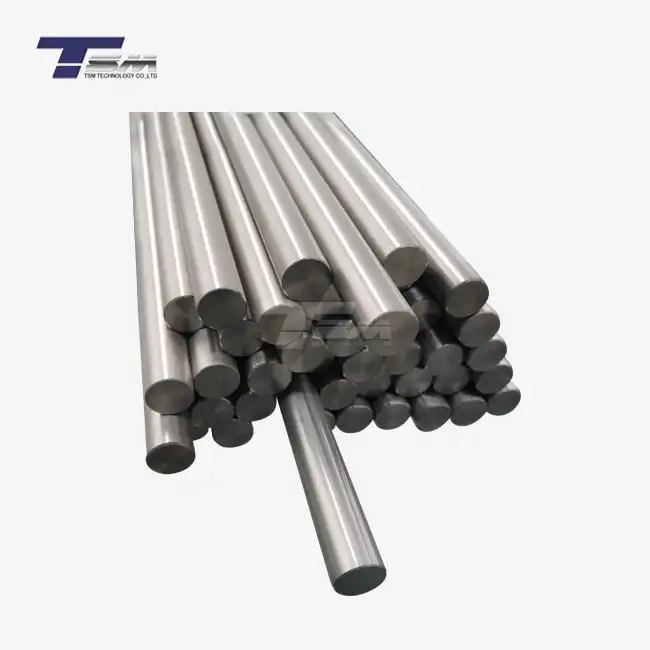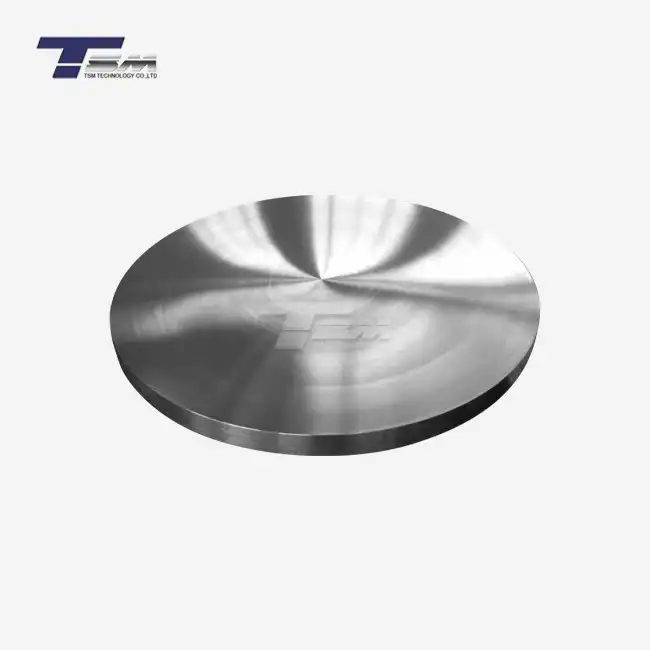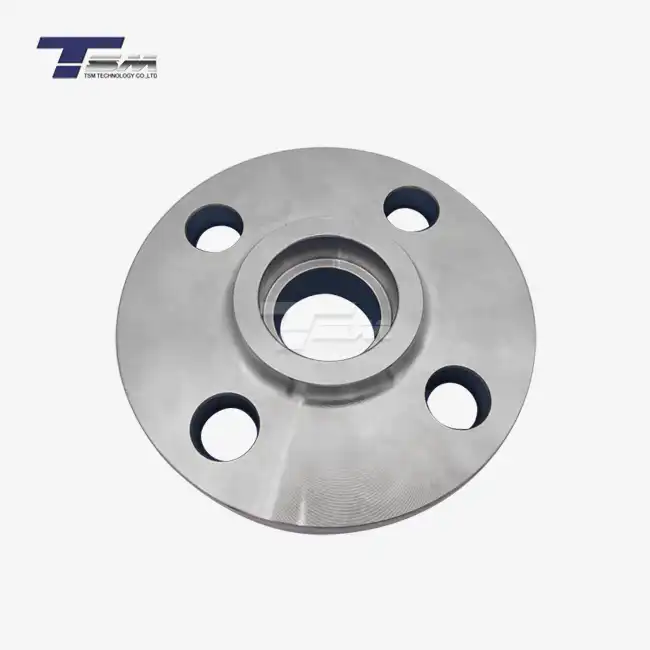Understanding Monel 400's Unique Properties
Composition and Characteristics
Monel 400, a nickel-copper alloy, boasts a remarkable balance of strength and corrosion resistance. Its composition typically includes 63-70% nickel, 28-34% copper, and small amounts of iron, manganese, and carbon. This unique blend results in a material that excels in various demanding environments, from marine applications to chemical processing. The Monel 400 round bar form is particularly versatile, lending itself to numerous fabrication methods while maintaining its exceptional properties.

Mechanical Behavior at Elevated Temperatures
When subjected to high temperatures during hot working, Monel round bar Monel 400 bar exhibits distinct mechanical behaviors. The material's strength decreases as temperature rises, but it retains sufficient ductility for forming operations. Understanding these temperature-dependent properties is crucial for successful hot working. Monel 400's recrystallization temperature, typically around 1400°F (760°C), marks a significant point in its hot working range, influencing grain structure and final material properties.
Oxidation and Surface Considerations
Hot working Monel 400 requires attention to oxidation and surface effects. At elevated temperatures, a thin oxide layer forms on the surface of Monel bar, which can impact the material's workability and final surface quality. Proper heating techniques and surface protection measures are essential to minimize these effects and ensure the integrity of the worked Monel 400 round bar.
Optimal Temperature Ranges and Heating Techniques
Recommended Hot Working Temperature Range
For optimal results, hot working of Monel 400 bar should be performed within a specific temperature range. The ideal hot working temperature typically falls between 1800°F and 2150°F (982°C to 1177°C). This range allows for sufficient material plasticity while avoiding excessive grain growth or unwanted phase transformations. It's crucial to maintain the workpiece temperature within this range throughout the forming process to ensure uniform deformation and preserve the alloy's desirable properties.
Uniform Heating Methods
Achieving uniform heating across the Monel 400 round bar is paramount for successful hot working. Induction heating offers precise temperature control and even heat distribution, making it an excellent choice for Monel bar. Alternatively, gas-fired furnaces can be used, provided they're equipped with accurate temperature controls and proper atmosphere regulation. Regardless of the method chosen, gradual and uniform heating is key to preventing thermal shock and ensuring consistent material properties throughout the workpiece.
Soaking Time and Temperature Monitoring
Proper soaking time is essential when heating Monel 400 for hot working. Allow sufficient time for the entire cross-section of the Monel bar to reach the desired temperature, typically 1 hour per inch of thickness. Accurate temperature monitoring using calibrated pyrometers or thermocouples is crucial throughout the heating and working process. This vigilance helps maintain the optimal temperature range and prevents overheating, which can lead to excessive grain growth or surface defects in the Monel 400 round bar.
Hot Working Techniques and Post-Processing Considerations
Forging and Rolling Practices
When forging or rolling Monel 400 bar, it's essential to apply consistent and controlled deformation. Start with moderate reductions and gradually increase as the material reaches its optimal working temperature. For Monel 400 round bar, rotary forging or radial forging can produce excellent results, ensuring uniform deformation across the cross-section. During rolling operations, maintain proper roll speed and gap settings to achieve the desired dimensional accuracy while minimizing surface defects.
Cooling and Stress Relief
After hot working, proper cooling of Monel 400 is crucial to preserve its microstructure and mechanical properties. Slow, controlled cooling is generally preferred to avoid thermal shock and residual stresses. For complex shapes or thick sections of Monel bar, consider intermediate stress relief annealing between hot working steps. This process, typically performed at temperatures between 1300°F and 1600°F (704°C to 871°C), helps alleviate internal stresses and improve dimensional stability.
Surface Treatment and Quality Control
Post-hot working surface treatment is often necessary to restore the optimal surface condition of Monel 400 round bar. Descaling through pickling or abrasive blasting can remove oxide layers formed during heating. Subsequent machining or grinding may be required to achieve final dimensional tolerances. Implement rigorous quality control measures, including non-destructive testing and metallographic examination, to ensure the hot-worked Monel bar meets specified mechanical and microstructural requirements.
Conclusion
Mastering the art of hot working Monel 400 bar requires a deep understanding of the alloy's unique properties and careful attention to process parameters. By adhering to the recommended temperature ranges, employing uniform heating techniques, and following best practices for forging and post-processing, manufacturers can harness the full potential of this exceptional material. The tips provided in this guide serve as a foundation for successful hot working of Monel 400 round bar, enabling the production of high-quality components that leverage the alloy's superior corrosion resistance and mechanical strength. As with any advanced manufacturing process, continuous learning and process refinement are key to achieving consistent, top-tier results when working with Monel bar.
Contact Us
For expert guidance on Monel 400 bar processing and to explore our comprehensive range of superior nickel alloys, contact TSM TECHNOLOGY today. Our team of specialists is ready to assist you in optimizing your manufacturing processes and selecting the ideal materials for your applications. Reach out to us at info@tsmnialloy.com to discover how our premium Monel 400 round bar and other alloy products can elevate your projects to new heights of performance and reliability.



